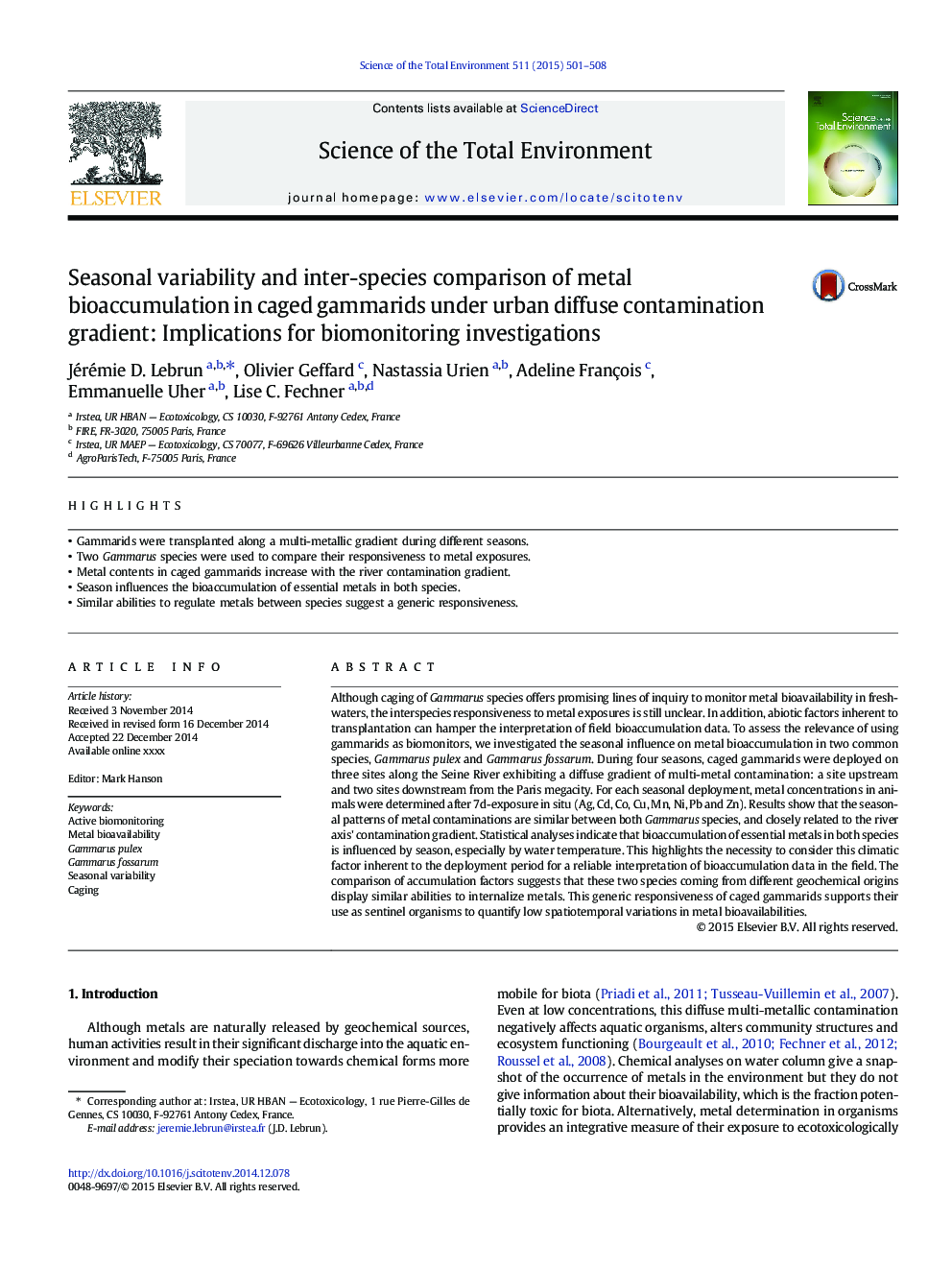| Article ID | Journal | Published Year | Pages | File Type |
|---|---|---|---|---|
| 6327510 | Science of The Total Environment | 2015 | 8 Pages |
Abstract
Although caging of Gammarus species offers promising lines of inquiry to monitor metal bioavailability in freshwaters, the interspecies responsiveness to metal exposures is still unclear. In addition, abiotic factors inherent to transplantation can hamper the interpretation of field bioaccumulation data. To assess the relevance of using gammarids as biomonitors, we investigated the seasonal influence on metal bioaccumulation in two common species, Gammarus pulex and Gammarus fossarum. During four seasons, caged gammarids were deployed on three sites along the Seine River exhibiting a diffuse gradient of multi-metal contamination: a site upstream and two sites downstream from the Paris megacity. For each seasonal deployment, metal concentrations in animals were determined after 7d-exposure in situ (Ag, Cd, Co, Cu, Mn, Ni, Pb and Zn). Results show that the seasonal patterns of metal contaminations are similar between both Gammarus species, and closely related to the river axis' contamination gradient. Statistical analyses indicate that bioaccumulation of essential metals in both species is influenced by season, especially by water temperature. This highlights the necessity to consider this climatic factor inherent to the deployment period for a reliable interpretation of bioaccumulation data in the field. The comparison of accumulation factors suggests that these two species coming from different geochemical origins display similar abilities to internalize metals. This generic responsiveness of caged gammarids supports their use as sentinel organisms to quantify low spatiotemporal variations in metal bioavailabilities.
Keywords
Related Topics
Life Sciences
Environmental Science
Environmental Chemistry
Authors
Jérémie D. Lebrun, Olivier Geffard, Nastassia Urien, Adeline François, Emmanuelle Uher, Lise C. Fechner,
